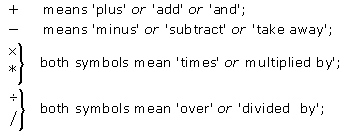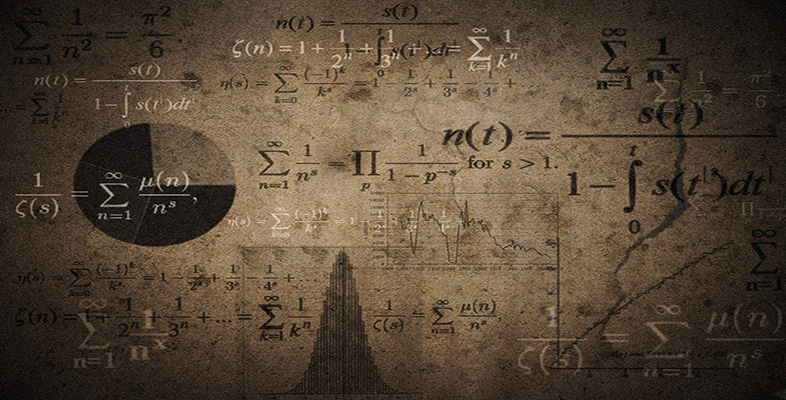2.6.1 Arithmetical symbols
You will have already met the symbols for the basic arithmetical operations, which are +, −, × and ÷, but you may not have met some of the alternative ways of writing × and ÷.
To recap, the main symbols for arithmetical operations are:

There are other alternatives to × and * for multiplication. Sometimes, provided there is no risk of ambiguity, no symbol is used, just as sometimes the words ‘multiplied by’ or ‘times’ can be omitted in speech: for example, two fours or five fives means two times four or five times five, respectively. So, instead of writing 3 × (4 + 5), you can just write 3(4 + 5) and save one symbol. Mathematicians like to be as concise as possible! Brackets avoid ambiguity in mathematical expressions.
An alternative to ÷ and / for division is a fractional notation: for example, ![]() means ‘add three and six, and then divide by four’. The slash symbol / is sometimes used for fractions: thus, three-quarters may be written as 3/4. Many calculators use this notation to display fractions.
means ‘add three and six, and then divide by four’. The slash symbol / is sometimes used for fractions: thus, three-quarters may be written as 3/4. Many calculators use this notation to display fractions.
Example 4
What do the following expressions mean?
(a) 5/(3 + 2)
(b) 5/3 + 2
(c) 4(8 − 5)
Answer
(a) Divide 5 by the sum of 3 and 2. (This gives 1.)
(b) Divide 5 by 3 and then add to 2, or
 added to 2. (This gives
added to 2. (This gives  .)
.)(c) Multiply 4 by the difference between 8 and 5. (This gives 12.)
